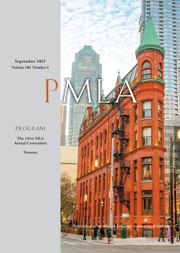No CrossRef data available.
Article contents
Trans Saints in Old English
Published online by Cambridge University Press: 01 September 2025
Abstract
This article uncovers the fractured and conflicting understandings of sex and gender in early medieval England around the year 1000 CE by exploring the Old English literary biographies of two saints often presented as women disguised as men. Ælfric’s Eugenia upholds binary gender expectations, while an alternative version of Eugenia—changed by a scribe and surviving in the burned remains of a single manuscript—oscillates between acceptance and intolerance. The anonymous Euphrosyne, in contrast, challenges gender norms throughout. This article argues that these characters and the texts’ competing views on sex and gender can be best understood by recognizing these two saints not as women in disguise but as trans men. A trans studies approach combined with philology and source study respects these two figures on their own terms while also uncovering elements of these texts and their cultural context that usually lie obscured.
Information
- Type
- Essay
- Information
- Copyright
- © 2025 The Author(s). Published by Cambridge University Press on behalf of Modern Language Association of America
Footnotes
This article is presented in solidarity with trans scholars, many of whom must fight for their own lives, rights, and identities while recovering and studying the lives and identities of nonconforming individuals from the Middle Ages. Iam deeply indebted to the Institute for Advanced Study in Princeton, NJ, for its support and to Mary Kate Hurley, Heather Maring, Heide Estes, and Caroline (Caz) Batten for their guidance.

